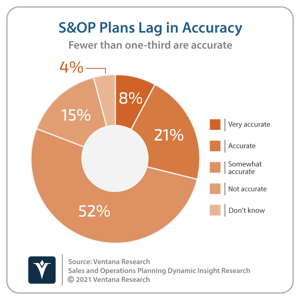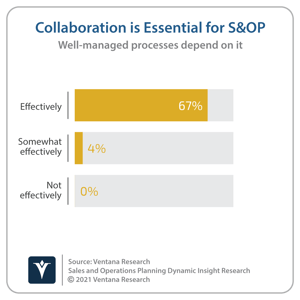Several years ago, I noted the importance of gaining resilience in managing supply chains. The world had entered a new era of trade following the financial crisis of 2007, as multilateral relationships were steadily fragmenting. For decades, sourcing and supply chain management was focused almost exclusively on achieving the lowest cost, and the world’s trade environment supported this approach. However, I observed that the new era of trade, supply chain planning and execution, would be more complex, and organizations needed to shift focus to emphasize business continuity and sustainability, accommodating change with the least disruption at the lowest cost. Sourcing decisions, logistics and product design would be crafted with an eye to a far-from-perfect and changeable world. Higher costs would be balanced against necessary resilience and sustainability, supported by the ability to make changes rapidly with assurance and limited risk.
The issue attracted scant attention. Then the pandemic struck and completely upended world trade and supply chains.
 Moreover, the importance of environmental, social and governance considerations has grown rapidly over the past two years, adding to the constraints considered in sourcing, supply chains and production. Ventana Research asserts that by 2025, over two-thirds of organizations will incorporate sustainability metrics in supply chain management to support ESG efforts.
Moreover, the importance of environmental, social and governance considerations has grown rapidly over the past two years, adding to the constraints considered in sourcing, supply chains and production. Ventana Research asserts that by 2025, over two-thirds of organizations will incorporate sustainability metrics in supply chain management to support ESG efforts.
Sales and operations planning, sometimes called integrated business planning, is a management discipline that enables executives to assess and manage trade-offs among multiple, interdependent business considerations: demand and supply market opportunities, customer service, inventory investments, production capabilities, supply availability and distribution constraints. The objective is to produce a plan that best fits the organization’s strategy and opportunities.
A recent analysis of our Sales and Operations Planning Dynamic Insights research provides perspective on the current state of this core business process. Using concise, web-based surveys, Ventana Research’s Dynamic Insights provide research participants with an immediate assessment of their organization’s efforts as well as research- and experience-based advice on potential next steps for improvement. For those who wish to do a quick assessment of their own organization’s sales and operations planning, the Dynamic Insights can be found here.
%20process.png?width=300&name=Q1%20How%20well%20does%20your%20company%20manage%20its%20sales%20and%20operations%20planning%20(S%26OP)%20process.png) S&OP eliminates or addresses problems caused by uncoordinated and unbalanced decision-making across sales, marketing, operations, manufacturing, supply chain, product development and finance. For example, a manufacturing business unit might elect to make long production runs of “product A” for the sake of its own efficiency. However, this can result in insufficient inventory of other products — causing lost sales and customer dissatisfaction because orders weren’t filled completely — as well as unnecessarily high working capital costs from carrying too much “product A” inventory.
S&OP eliminates or addresses problems caused by uncoordinated and unbalanced decision-making across sales, marketing, operations, manufacturing, supply chain, product development and finance. For example, a manufacturing business unit might elect to make long production runs of “product A” for the sake of its own efficiency. However, this can result in insufficient inventory of other products — causing lost sales and customer dissatisfaction because orders weren’t filled completely — as well as unnecessarily high working capital costs from carrying too much “product A” inventory.
The Dynamic Insights analysis suggests that there is considerable room for improvement in the way organizations that deal in physical products currently perform sales and operations planning. One-half (50%) of participants rated their organization’s S&OP performance as just adequate, while 24% said they do it well or very well. A word of caution: Since it’s impossible to rule out some selection bias in those choosing to participate in the Dynamic Insights, we cannot present the sample as definitively representative of all product companies.
 When asked their main complaints about the S&OP process, participants most frequently (42%) pointed to data, reporting that the necessary data isn’t available. Another 27% said their data isn’t accurate. One consequence of bad data is that the resulting plans aren’t completely accurate. Only 29% of research participants characterized their S&OP as very accurate or accurate, while one-half (52%) described theirs as somewhat accurate. Somewhat accurate planning, especially when it involves extensive cross-functional collaboration, is like somewhat accurate juggling: There are a lot of dropped balls.
When asked their main complaints about the S&OP process, participants most frequently (42%) pointed to data, reporting that the necessary data isn’t available. Another 27% said their data isn’t accurate. One consequence of bad data is that the resulting plans aren’t completely accurate. Only 29% of research participants characterized their S&OP as very accurate or accurate, while one-half (52%) described theirs as somewhat accurate. Somewhat accurate planning, especially when it involves extensive cross-functional collaboration, is like somewhat accurate juggling: There are a lot of dropped balls.
Which connects with the second-most common complaint, namely insufficient collaboration. The research found that 35% of participants said there isn’t enough participation by stakeholders. Ideally, S&OP should involve broad participation across key business functions such as sales, marketing, manufacturing, logistics, finance and the senior leadership team. The last is critical because without senior-level support, it’s difficult to have full collaboration in the process. And collaboration is essential for achieving a well-managed process.
 The research finds a correlation between the two: Most organizations (67%) that collaborate effectively or very effectively in S&OP manage their S&OP process well or very well, compared to just 4% of those that collaborate somewhat effectively and none that report poor collaboration. An executive-level focus on S&OP also correlates with process quality: 79% of organizations where executives communicate strategy and objectives related to S&OP view the process as being managed well or very well, compared to 8% percent that communicate only adequately and none where communication is poor.
The research finds a correlation between the two: Most organizations (67%) that collaborate effectively or very effectively in S&OP manage their S&OP process well or very well, compared to just 4% of those that collaborate somewhat effectively and none that report poor collaboration. An executive-level focus on S&OP also correlates with process quality: 79% of organizations where executives communicate strategy and objectives related to S&OP view the process as being managed well or very well, compared to 8% percent that communicate only adequately and none where communication is poor.
Organizations plan to achieve results, so the planning and review part of the process should be action oriented. Unfortunately, only 23% of participants said they can drill down right away to uncover details about issues and opportunities that were behind the results. Being able to drill down right away enables an S&OP working group to better understand what needs addressing and, by weighing the potential outcome of different scenarios, arrive at the best next steps. Another 15% of research participants said they can investigate results within an hour or two of a group meeting, which may be adequate to generate an action, but is far from ideal. The rest of the research participants report that it takes longer to see results, and therefore are likely to be slow in responding to opportunities and issues.
How frequently organizations review sales and operations plans is also correlated with how well the process is managed. More frequent checks of actual results versus the plan are likely to produce better results because deviations can be spotted and addressed sooner. The research found that 52% of participants who review plans monthly or more often also said their organization manages its S&OP process well or very well. Only 14% that review plans less frequently gave that assessment.
Organizations need to assess how well sales and operations planning is managed. S&OP is a discipline that can improve the operational effectiveness and financial efficiency of a product-focused business. It’s essential for organizations that have even moderately complex supply chains, frequent changes in products or long lead times, or that outsource all or part of the production to third parties. Finance organizations must be involved in sales and operations planning to ensure that all costs are accurately reflected in optimizing production decisions that impact the ability to meet demand and revenue potential. Moreover, as interest rates rise, the cost of holding inventory will increase and therefore be a more significant constraint in creating plans.
Organizations need to assess sales and operations planning from a perspective that considers people, processes, information and technology. Senior-level involvement is often necessary because there are typically change-management issues and the need to alter well-established but likely obsolete methods and practices. Clean data and the control of that data is essential to avoid garbage-in/garbage-out planning. I recommend that all midsize and larger organizations review S&OP efforts to evaluate the quality and effectiveness of these processes. Related data and software issues also must be addressed, especially if desktop spreadsheets — which typically lack the power and flexibility to do the job well — are used to manage the S&OP process.
Regards,
Robert Kugel

 Moreover, the importance of environmental, social and governance considerations has grown rapidly over the past two years, adding to the constraints considered in sourcing, supply chains and production. Ventana Research asserts that by 2025, over two-thirds of organizations will incorporate sustainability metrics in supply chain management to support ESG efforts.
Moreover, the importance of environmental, social and governance considerations has grown rapidly over the past two years, adding to the constraints considered in sourcing, supply chains and production. Ventana Research asserts that by 2025, over two-thirds of organizations will incorporate sustainability metrics in supply chain management to support ESG efforts.%20process.png?width=300&name=Q1%20How%20well%20does%20your%20company%20manage%20its%20sales%20and%20operations%20planning%20(S%26OP)%20process.png) S&OP eliminates or addresses problems caused by uncoordinated and unbalanced decision-making across sales, marketing, operations, manufacturing, supply chain, product development and finance. For example, a manufacturing business unit might elect to make long production runs of “product A” for the sake of its own efficiency. However, this can result in insufficient inventory of other products — causing lost sales and customer dissatisfaction because orders weren’t filled completely — as well as unnecessarily high working capital costs from carrying too much “product A” inventory.
S&OP eliminates or addresses problems caused by uncoordinated and unbalanced decision-making across sales, marketing, operations, manufacturing, supply chain, product development and finance. For example, a manufacturing business unit might elect to make long production runs of “product A” for the sake of its own efficiency. However, this can result in insufficient inventory of other products — causing lost sales and customer dissatisfaction because orders weren’t filled completely — as well as unnecessarily high working capital costs from carrying too much “product A” inventory. When asked their main complaints about the S&OP process, participants most frequently (42%) pointed to data, reporting that the necessary data isn’t available. Another 27% said their data isn’t accurate. One consequence of bad data is that the resulting plans aren’t completely accurate. Only 29% of research participants characterized their S&OP as very accurate or accurate, while one-half (52%) described theirs as somewhat accurate. Somewhat accurate planning, especially when it involves extensive cross-functional collaboration, is like somewhat accurate juggling: There are a lot of dropped balls.
When asked their main complaints about the S&OP process, participants most frequently (42%) pointed to data, reporting that the necessary data isn’t available. Another 27% said their data isn’t accurate. One consequence of bad data is that the resulting plans aren’t completely accurate. Only 29% of research participants characterized their S&OP as very accurate or accurate, while one-half (52%) described theirs as somewhat accurate. Somewhat accurate planning, especially when it involves extensive cross-functional collaboration, is like somewhat accurate juggling: There are a lot of dropped balls. The research finds a correlation between the two: Most organizations (67%) that collaborate effectively or very effectively in S&OP manage their S&OP process well or very well, compared to just 4% of those that collaborate somewhat effectively and none that report poor collaboration. An executive-level focus on S&OP also correlates with process quality: 79% of organizations where executives communicate strategy and objectives related to S&OP view the process as being managed well or very well, compared to 8% percent that communicate only adequately and none where communication is poor.
The research finds a correlation between the two: Most organizations (67%) that collaborate effectively or very effectively in S&OP manage their S&OP process well or very well, compared to just 4% of those that collaborate somewhat effectively and none that report poor collaboration. An executive-level focus on S&OP also correlates with process quality: 79% of organizations where executives communicate strategy and objectives related to S&OP view the process as being managed well or very well, compared to 8% percent that communicate only adequately and none where communication is poor.








